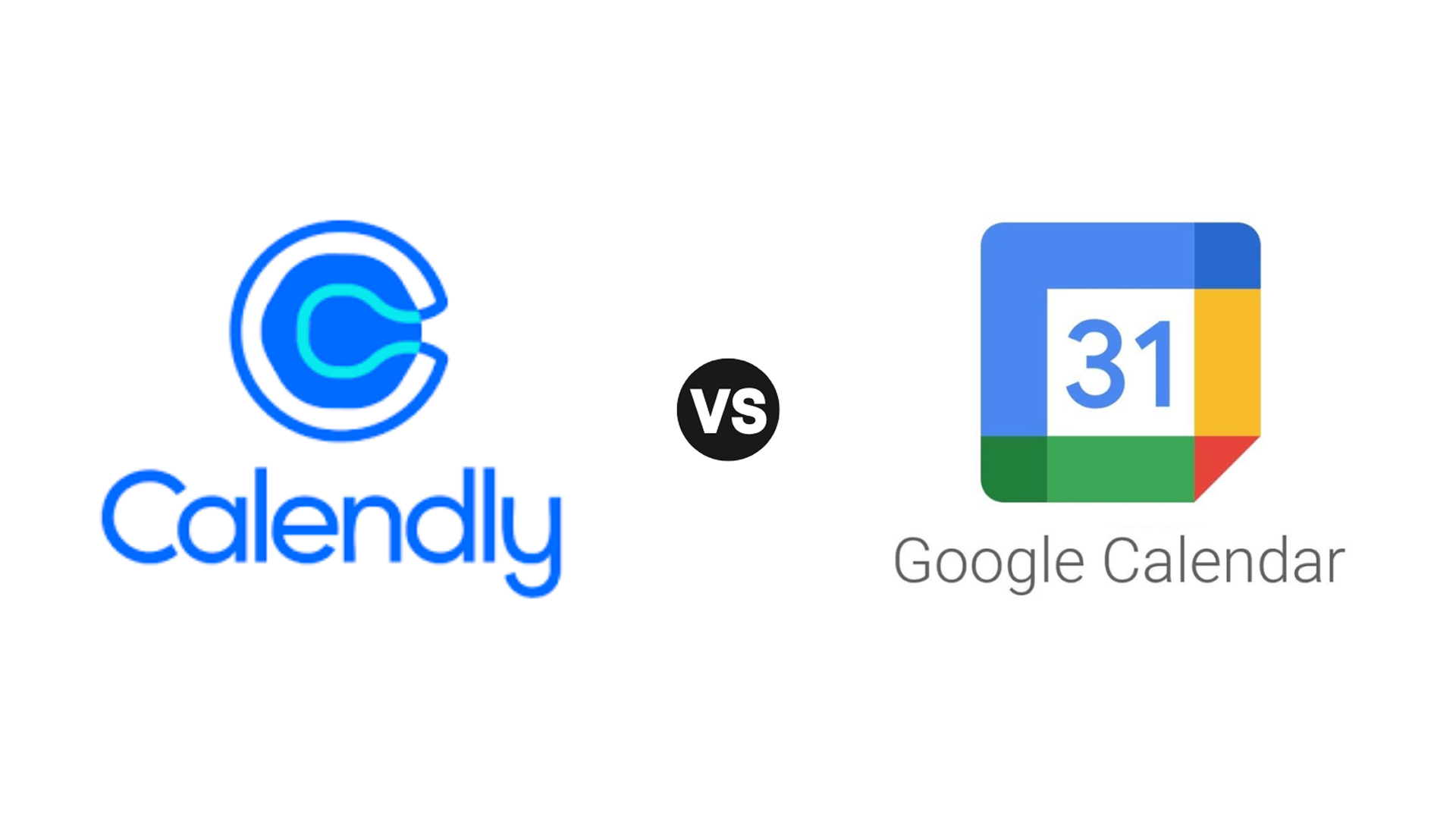You open your week hoping to get work done, and before lunch, you’re already digging through five different meeting invites, asking, “Does Monday 3 pm work?” The truth is, scheduling isn’t just annoying; it’s time lost.
According to a recent report, the average worker spends about 37 % of their time at work in meetings or coordinating them, with businesses losing over $29,000 per employee annually from meeting-related inefficiencies.
Which brings us to the question: When it comes to efficient scheduling, how do your tools measure up? Google Calendar streamlines scheduling within Gmail and Drive, while Calendly excels at advanced bookings and team automation.
In this blog, we’ll see how they stack up and which one truly makes your schedule work smarter, not harder.
Key Takeaways:
- Reality Check: Professionals spend nearly 37% of their workweek in meetings; time that smarter scheduling could reclaim.
- Google Calendar: Best for seamless integration within Gmail, Meet, and Workspace, keeping scheduling simple and native.
- Calendly: Excels at automation, routing, and paid bookings — ideal for teams that live on workflows and client meetings.
- Pricing Insight: Both offer free plans, but value scales differently — Google with Workspace, Calendly with team automation.
- Integration Game: Google rules its own ecosystem; Calendly connects across CRMs, video tools, and automation platforms.
- The Smarter Move — Clockwise: Goes beyond booking links to optimize focus time, protect work-life balance, and make your day flow intelligently.
Feature Comparison: Calendly vs Google Calendar at a Glance
When it comes to scheduling, both tools promise to simplify your day, but they do so in very different ways. One builds on the familiar rhythm of your inbox, while the other rewrites the entire playbook around automation and team flow.
Here’s a quick side-by-side look at how Calendly and Google Calendar stack up on the features that matter most:
Suggested Read: Importance of Time Management in the Workplace
With the groundwork laid, it’s time to compare how these platforms approach scheduling, the core of every booking workflow.
Scheduling Power: How Each Tool Handles Bookings

Scheduling is where convenience meets complexity. Both tools aim to make booking effortless, but their methods couldn’t be more different.
Let’s break down how each platform handles bookings across real-world scheduling scenarios.
1. One-on-One Booking
Google Calendar now lets you create shareable appointment schedules (a built-in booking page) so someone can pick a slot and it lands directly on your calendar, now tightly surfaced inside Gmail and Calendar. That makes quick, ad hoc bookings frictionless for people already using Google apps.
Calendly does the same basic thing but layers more controls: event templates, automatic buffers, required questions, and conditional rules before a slot is confirmed. If you need a polished intake flow (e.g., ask for a phone number, then route the meeting), Calendly out-classes a bare booking page.
Suggested Read: How To Write Effective Meeting Minutes [+Free Template & Best Practices]
2. Group & Team Scheduling
If your bookings involve multiple people (team demos, pooled experts), Calendly was built for that: round-robin distribution, pooled availability, collective events that combine hosts’ calendars, and routing forms to match requesters with the right expert. These features are designed to reduce manual handoffs and speed up lead response.
Google’s team features are improving and are fine for simpler group slots in Workspace. Still, Google currently focuses on making appointments native and easy to use, rather than on complex routing rules. For heavyweight team allocation logic, Calendly remains the more mature option.
3. Payments, Workflows & Automations
Calendly integrates natively with Stripe and PayPal so that you can require payment at booking and trigger follow-up automations (reminders, calendar invites, CRM updates). That makes it a strong pick for paid consultations, workshops, or consultative sales flows.
Google’s appointment pages are adding payment support on some tiers and emphasizing seamlessness inside Workspace; however, payment + advanced post-booking workflows are generally deeper and more configurable in dedicated schedulers like Calendly.
Also Read: Strategies for Productive Workflow and Time Management
4. AI & Smart Scheduling
Google is embedding AI into scheduling; Gmail’s “Help Me Schedule” (Gemini-powered) now suggests meeting times based on email context and your calendar, streamlining the send-time negotiation for one-on-one meetings. That’s a huge win for speed when you’re coordinating via email.
Calendly doesn’t offer a Gmail-style AI composer, but its strength lies in deterministic rules and automations; predictable behavior for team routing, follow-ups, and integrations. If you need “set it and forget it” logic for enterprise workflows, rule-based automations are more reliable than conversational AI at this point.
So, how much does all that convenience really cost? Time to break down the pricing and see what you’re actually getting for your money.
Pricing and Value: What You Actually Pay For
When comparing scheduling tools, the headline price is only half the story; you need to look at what you unlock and how it scales.
The table below shows current published pricing and helps reveal where each tool delivers value and where it doesn’t.
Pricing aside, the real value often lies in how easily a tool integrates with your existing stack. Let’s see how Calendly and Google Calendar fit into broader workflows and integrations.
Integration and Ecosystem: How Well They Fit Into Your Workflow

Integrations determine whether a scheduling tool simply books meetings or powers your entire workflow. While Google Calendar is built for seamless collaboration within its own ecosystem, Calendly is designed to connect across dozens of external tools, from CRMs to automation platforms.
Let’s see how each one fits into the modern work stack.
1. Google Calendar Integrations
Google Calendar thrives inside its native ecosystem. It’s tightly woven into Gmail, Drive, Meet, and Workspace, allowing you to schedule and join meetings without ever leaving your inbox.
- Native workspace integration: Schedule meetings directly from Gmail, embed booking links, and auto-sync across Google Meet and Drive.
- Payment support: Built-in Stripe integration allows users to collect payments for appointments, a new Workspace feature aimed at freelancers and educators.
- AI-powered scheduling: With Gemini in Workspace, Google now suggests smart meeting times and automatically flags conflicts.
- Cross-platform connectivity: Works seamlessly across Android, iOS, and web, with API access for developers building on Workspace tools.
Best for: Teams already using Google Workspace who want low-friction, AI-assisted scheduling within a unified environment.
2. Calendly Integrations
Calendly’s strength lies in its breadth and flexibility. It doesn’t just work with your calendar; it integrates with your sales, marketing, and communication stack to automate entire workflows.
- Native integrations: Connects with Zoom, Microsoft Teams, Slack, Salesforce, HubSpot, and Notion, among others.
- Automation and triggers: Through Zapier and webhooks, Calendly syncs events across 8,000+ apps — from CRMs to project management tools.
- Developer-friendly API: The Calendly API v2 lets teams embed scheduling inside their own products or customer portals.
- Payment flexibility: Built-in Stripe and PayPal options for paid sessions, ideal for consultants and educators.
- Team workflows: Automates round-robin booking, pooled availability, and follow-up workflows across departments.
Best for: Businesses needing customizable workflows, CRM integration, and scalable automation that extends beyond just scheduling.
As scheduling tools become more connected, the next big question isn’t about convenience; it’s about trust. How securely do they handle your data and meetings?
Security and Privacy: Enterprise-Ready or Basic Safe?

Whether you’re working with external clients, teams across borders, or sensitive internal calendars, you need assurances around encryption, identity control, compliance, and auditability.
Below, we compare Google Calendar and Calendly on those critical security and privacy dimensions.
Takeaway:
Google Calendar ensures top-tier security through Workspace’s unified infrastructure, making it ideal for teams already in that ecosystem. Calendly matches it with enterprise-grade compliance and access controls designed for cross-platform teams and external client workflows.
Even with strong security and solid scheduling features, both tools have their limits, especially when it comes to optimizing time itself. That’s where Clockwise steps in, offering a more innovative, more adaptive approach to scheduling.
Exploring Clockwise: A Smarter Alternative
In a world where meetings often dictate our days, Clockwise takes a bold new approach; not just helping you schedule meetings faster, but helping you reclaim your time by optimizing your entire calendar.
Instead of stopping at “find a free slot,” it asks you: “What kind of day do you actually want?” and then works to protect focus time, group availability, and team bandwidth around those goals.
Below are the standout features that set it apart.
- Flexible Meetings & Holds: Label which meetings can move, let Clockwise shift them to respect your ideal day, lunch break, or travel time.
- Focus-Time Engine: Set your weekly deep work goal, and Clockwise blocks time, protects it, and automatically declines disturbances if needed.
- Scheduling Links & Group Availability: Share your availability with external stakeholders and let them book automatically — no more email ping-pong.
- Team & Analytics Tools: Beyond individual scheduling—see team bandwidth, dedicate no-meeting days, sync out-of-office calendars, manage collective availability.
- AI-Powered Conversation & Optimization: Ask your calendar in natural language (“Find me 1:1s with my team next week”) and let Clockwise handle the scheduling logic behind the scenes.
Wrapping Up
At the end of the day, both Google Calendar and Calendly excel at what they were built for: Google Calendar keeps scheduling simple and tightly woven into your daily Workspace flow, while Calendly powers automation-heavy, multi-stakeholder booking systems that save time at scale.
However, if you’re looking beyond meetings, toward actually owning your time, neither tool fully solves that problem. That’s where Clockwise stands apart. Instead of just helping you book faster, it helps you work smarter, by turning your calendar into an adaptive system that protects your focus, balances your day, and aligns your team automatically.
Try Clockwise for free today and see the difference a truly intelligent scheduler can make.
FAQs
1. Which is better for scheduling- Calendly or Google Calendar?
If you just need to book meetings and sync across Gmail and Drive, Google Calendar is great. However, for automated reminders, team scheduling, and workflows, Calendly offers more flexibility.
2. Can I use Calendly with Google Calendar?
Yes! Calendly integrates directly with Google Calendar, so your events sync automatically. It prevents double-booking and keeps everything updated in real time.
3. Does Google Calendar have the same features as Calendly?
Not yet. Google Calendar now includes appointment scheduling, but Calendly still leads with custom booking links, automation, payments, and team routing options.
4. Is Calendly free to use with Google Calendar?
Yes. Calendly’s free plan connects with one Google Calendar and offers a basic booking page. You’ll need a paid plan for advanced features like automations and team scheduling.
5. What’s the best alternative to Calendly and Google Calendar?
If you want something smarter, try Clockwise. It optimizes your entire calendar for focus time, meetings, and team balance; not just booking slots.


.gif)
.png)
.png)


